The Development and Teaching of the Postgraduate Course “Engineering System Modeling and Simulation” in Combination with Essentials Taken from Research Projects
Abstract
:1. Introduction
2. Integration of Project Research Results in the Construction of the Course
2.1. Scientific Research and Achievements Related to “Engineering System Modeling and Simulation”
2.2. The Implementation Approach for Course Construction
3. Comparison, Analysis, and Discussion
4. Conclusions
Author Contributions
Funding
Data Availability Statement
Conflicts of Interest
References
- Ayas, M.S.; Altas, I.H. A virtual laboratory for system simulation and control with undergraduate curriculum. Comput. Appl. Eng. Educ. 2016, 24, 122–130. [Google Scholar] [CrossRef]
- Zhang, L.; Ye, F.; Xie, K.; Gu, P.; Wang, X.; Laili, Y.; Zhao, C.; Zhang, X.; Chen, M.; Lin, T.; et al. An Integrated Intelligent Modeling and Simulation Language for Model-based Systems Engineering. J. Ind. Inf. Integr. 2022, 28, 100347. [Google Scholar] [CrossRef]
- Jeffrey, R.; Lundy, M.; Coffey, D.; McBreen, S.; Martin-Carrillo, A.; Hanlon, L. Teaching computational thinking to space science students. In Proceedings of the 4th Symposium on Space Educational Activities, Barcelona, Spain, 27–29 April 2022. [Google Scholar]
- Devlin, M.; Samarawickrema, G. The criteria of effective teaching in a changing higher education context. High. Educ. Res. Dev. 2010, 29, 111–124. [Google Scholar] [CrossRef]
- Bielik, T.; Stephens, L.; McIntyre, C.; Damelin, D.; Krajcik, J.S. Supporting Student System Modelling Practice Through Curriculum and Technology Design. J. Sci. Educ. Technol. 2021, 31, 217–231. [Google Scholar] [CrossRef]
- Gilissen, M.G.R.; Knippels, M.-C.P.J.; van Joolingen, W.R. Bringing systems thinking into the classroom. Int. J. Sci. Educ. 2020, 42, 1253–1280. [Google Scholar] [CrossRef]
- Maniu, C.S.; Sandou, G.; Chevalier, V.L.-L. Feedback on Innovative Pedagogy for teaching Systems Modeling. In Proceedings of the IFAC (International Federation of Automatic Control) 2019, Berlin, Germany, 28–30 August 2019; pp. 230–235. [Google Scholar]
- He, X.; Hu, Z.; Meng, N. A theoretic framework of bidirectional transformation between systems and models. Sci. China-Inf. Sci. 2022, 65, 202103. [Google Scholar] [CrossRef]
- Rampazzo, M.; Beghi, A. Designing and teaching of an effective engineering continuing education. Comput. Appl. Eng. Educ. 2018, 26, 739–748. [Google Scholar] [CrossRef]
- Fisher, D. Reflections on Teaching System Dynamics Modeling to Secondary School Students for over 20 Years. Systems 2018, 6, 12. [Google Scholar] [CrossRef]
- Jiang, Y.; Li, B. Exploration on the Teaching Reform Measure for Machine Learning Course System of Artificial Intelligence Specialty. Sci. Program. 2021, 2021, 8971588. [Google Scholar] [CrossRef]
- Luo, Y.; Qin, S.-B.; Wang, D.-S. Reform of embedded system experiment course based on engineering education accreditation. Int. J. Electr. Eng. Educ. 2020. [Google Scholar] [CrossRef]
- Liang, D.; Wang, L. Teaching System Design of “Systems Engineering” Curriculum in Industrial Engineering. In Proceedings of the International Conference on Advanced Materials and Information Technology Processing (AMITP 2011), Guangzhou, China, 17–18 April 2011; pp. 1488–1492. [Google Scholar]
- Wang, Z.; Li, A.; Li, J.; Fang, P. Teaching reform of foundation engineering in applied universities based on emerging engineering education. IOP Conf. Ser. Earth Environ. Sci. 2019, 267, 052014. [Google Scholar]
- Sun, Z.; Liu, J. The Application of Immersive Interactive Technology in Animation Teaching. Adv. Multimed. 2022, 2022, 1611497. [Google Scholar] [CrossRef]
- Dave, R. CS 207: Systems Development for Computational Science. Available online: https://iacs-cs207.github.io/cs207-2016/ (accessed on 24 November 2022).
- Sevgi, L. Teaching EM Modeling and Simulation as a Graduate-Level Course. IEEE Antennas Propag. Mag. 2012, 54, 261–269. [Google Scholar] [CrossRef]
- Department of Mechanical Engineering, U.O.C., Berkeley. ME 271—Intermediate Dynamics (3 Units), Graduate Course, Syllabus. Available online: https://guide.berkeley.edu/search/?P=mec+eng+175 (accessed on 24 November 2022).
- University of Cambridge. Engineering Tripos Part IA, 1P1: Mechanical Vibrations. Available online: http://teaching.eng.cam.ac.uk (accessed on 21 December 2022).
- Tan, A.P.G. Simulation and Modelling Techniques. Available online: https://www.comp.nus.edu.sg/~cs5233/ (accessed on 21 December 2022).
- Kember, D.; McNaught, C.; Chong, F.C.Y.; Lam, P.; Cheng, K.F. Understanding the ways in which design features of educational websites impact upon student learning outcomes in blended learning environments. Comput. Educ. 2010, 55, 1183–1192. [Google Scholar] [CrossRef]
- Wati, E.K.; Widiansyah, N. Design of Learning Media: Modeling & Simulation of Building Thermal Comfort Optimization System in Building Physics Course. J. Pendidik. IPA Indones. 2020, 9, 257–266. [Google Scholar] [CrossRef]
- Pavlov, O.; Doyle, J.; Saeed, K.; Lyneis, J.; Radzicki, M. The Design of Educational Programs in System Dynamics at Worcester Polytechnic Institute (WPI). Systems 2014, 2, 54–76. [Google Scholar] [CrossRef]
- Liu, S.; Shan, X.; Cao, W.; Yang, Y.; Xie, T. A longitudinal-torsional composite ultrasonic vibrator with thread grooves. Ceram. Int. 2017, 43, S214–S220. [Google Scholar] [CrossRef]
- Liu, S.; Shan, X.; Guo, K.; Xie, T. Design and Fabrication of a Skew-Typed Longitudinal-Torsional Composite Ultrasonic Vibrator for Titanium Wire Drawing. IEEE Access 2016, 4, 6749–6756. [Google Scholar] [CrossRef]
- Liu, Z.; Chen, Y.; Song, H.; Xing, Z.; Tian, H.; Shan, X. High-Speed Handling Robot with Bionic End-Effector for Large Glass Substrate in Clean Environment. Sensors 2022, 22, 149. [Google Scholar] [CrossRef] [PubMed]
- Sui, G.D.; Zhang, X.F.; Shan, X.B.; Hou, C.W.; Hu, J.T.; Xie, T. A novel wake-excited magnetically coupled underwater piezoelectric energy harvester. Int. J. Mech. Sci. 2023, 245, 108074. [Google Scholar] [CrossRef]
- Tian, H.G.; Shan, X.B.; Sui, G.D.; Xie, T. Enhanced performance of piezoaeroelastic energy harvester with rod-shaped attachments. Energy 2022, 238, 121781. [Google Scholar] [CrossRef]
- Kim, Y.; Ahn, C. Effect of Combined Use of Flipped Learning and Inquiry-Based Learning on a System Modeling and Control Course. IEEE Trans. Educ. 2018, 61, 136–142. [Google Scholar] [CrossRef]
- Tavares, R.; Marques Vieira, R.; Pedro, L. Mobile App for Science Education: Designing the Learning Approach. Educ. Sci. 2021, 11, 79. [Google Scholar] [CrossRef]
- The Results of the Fourth Round of National Mechanical Engineering Discipline Evaluation. Available online: https://www.cdgdc.edu.cn/dslxkpgjggb/ (accessed on 24 November 2022).
- The Top 10 Universities in the QS World University Rankings for Mechanical Engineering 2022. Available online: https://www.topuniversities.com/university-rankings/university-subject-rankings/2022/mechanical-aeronautical-manufacturing-engineering (accessed on 24 November 2022).
- Massachusetts Institute of Technology. Modeling and Simulation of Dynamic Systems. Available online: https://ocw.mit.edu/courses/2-141-modeling-and-simulation-of-dynamic-systems-fall-2006/ (accessed on 24 November 2022).
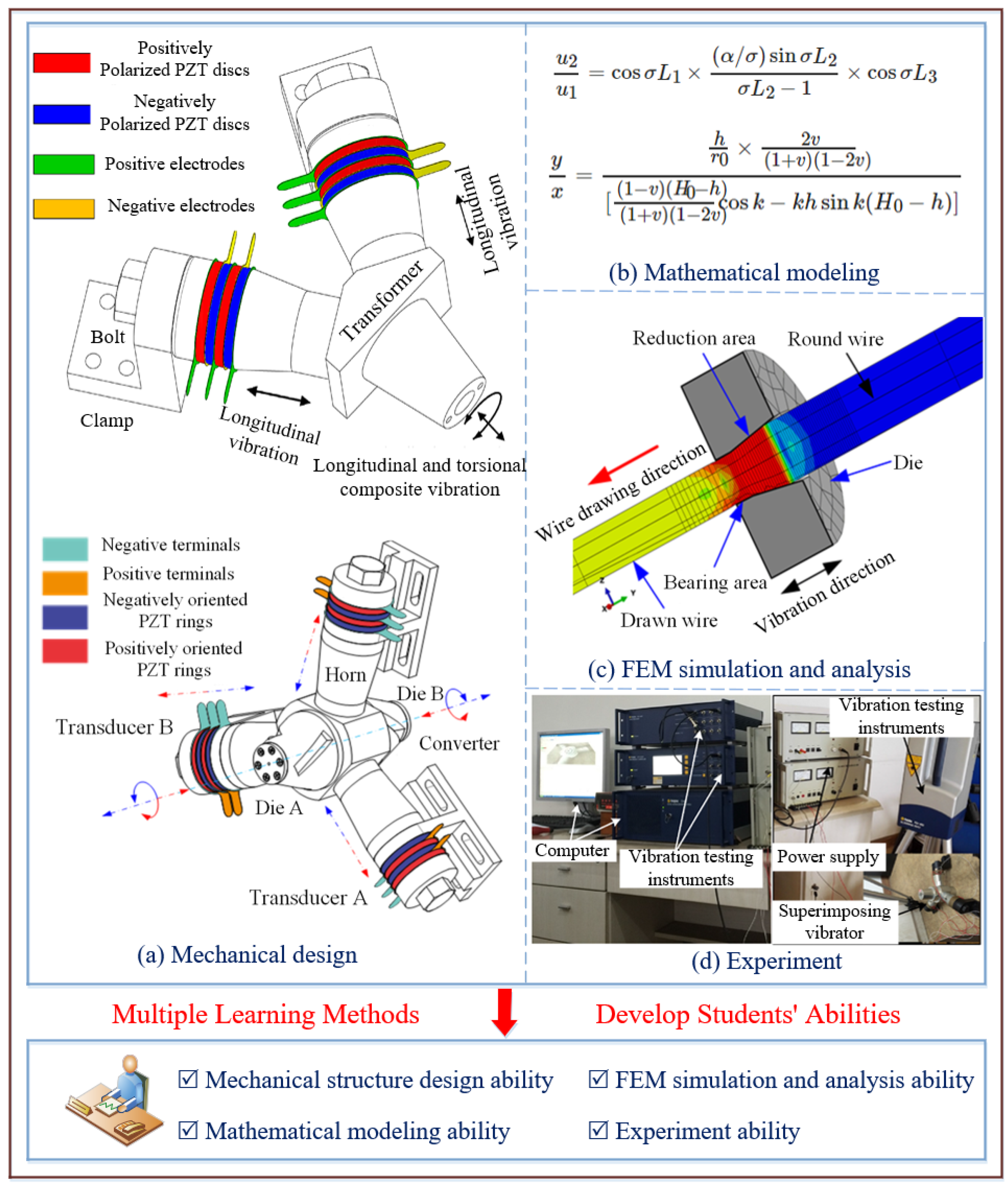
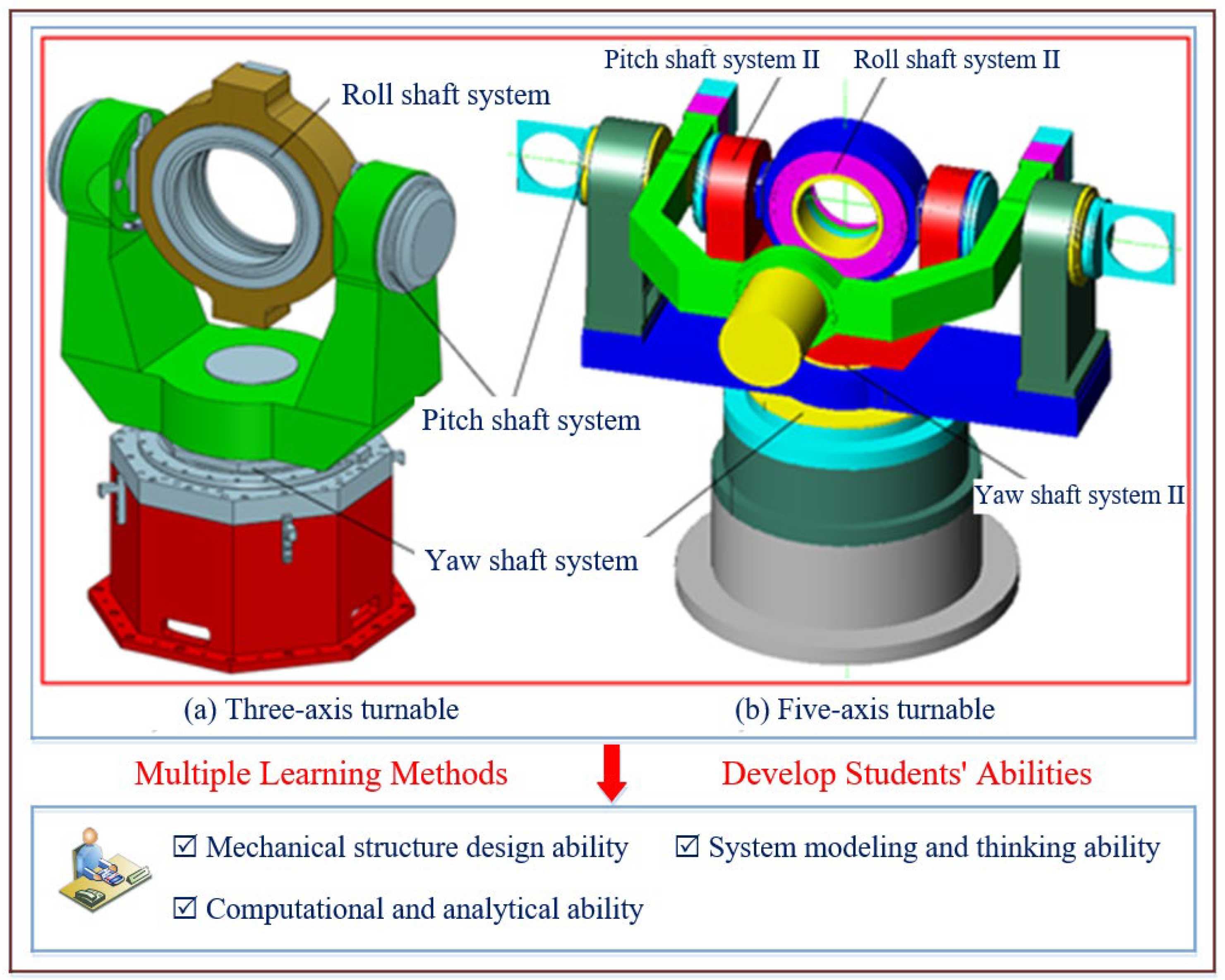
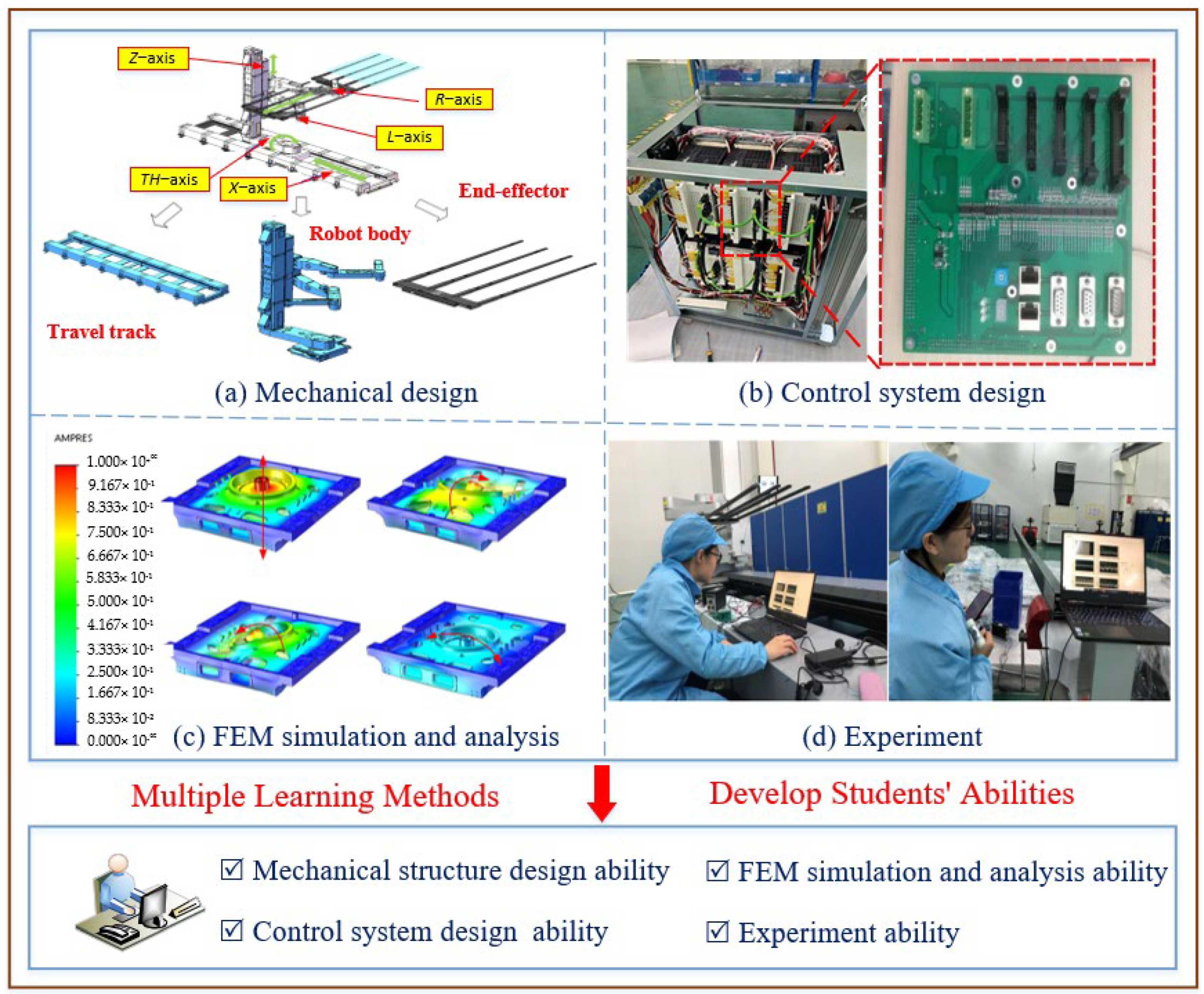
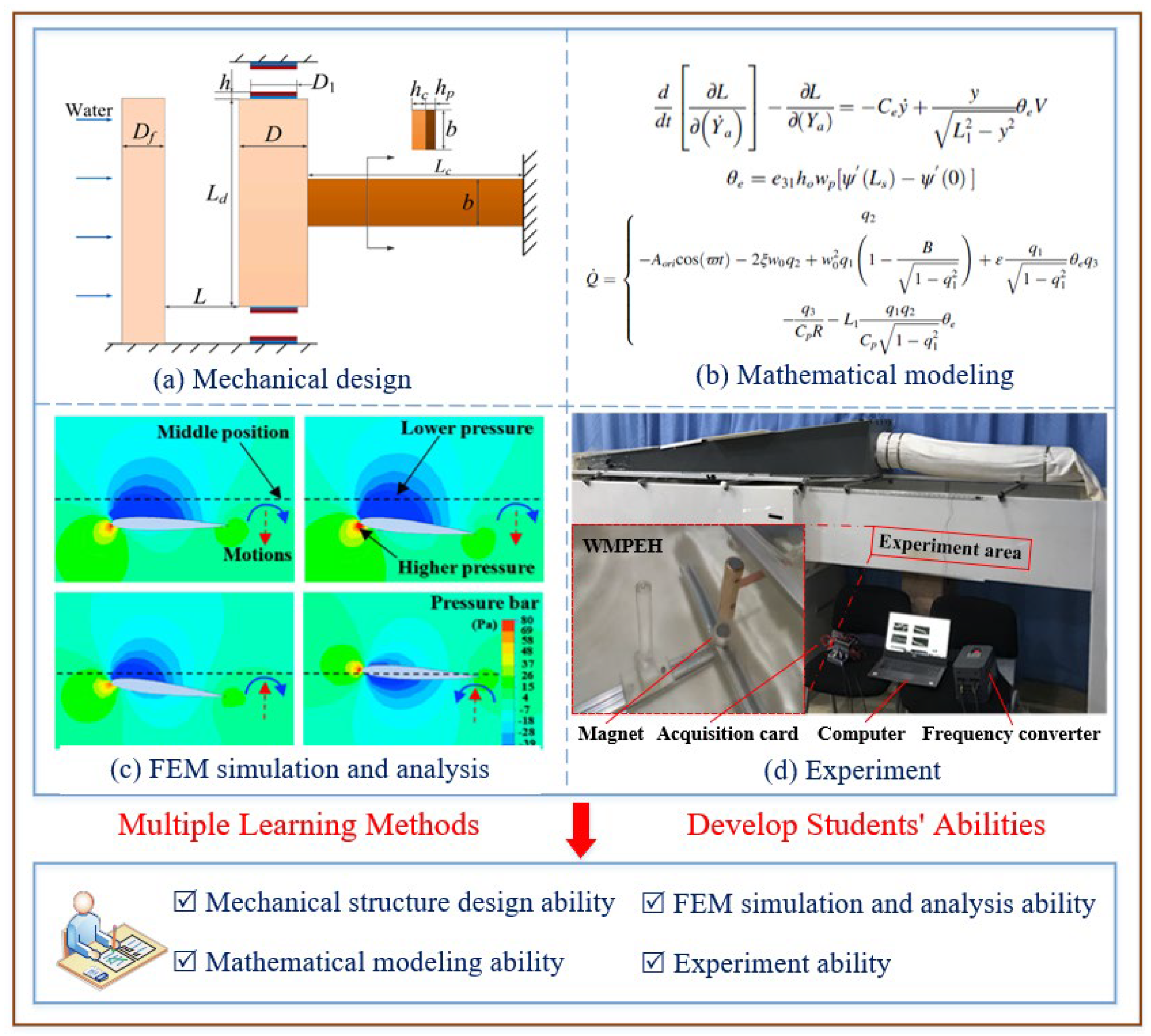
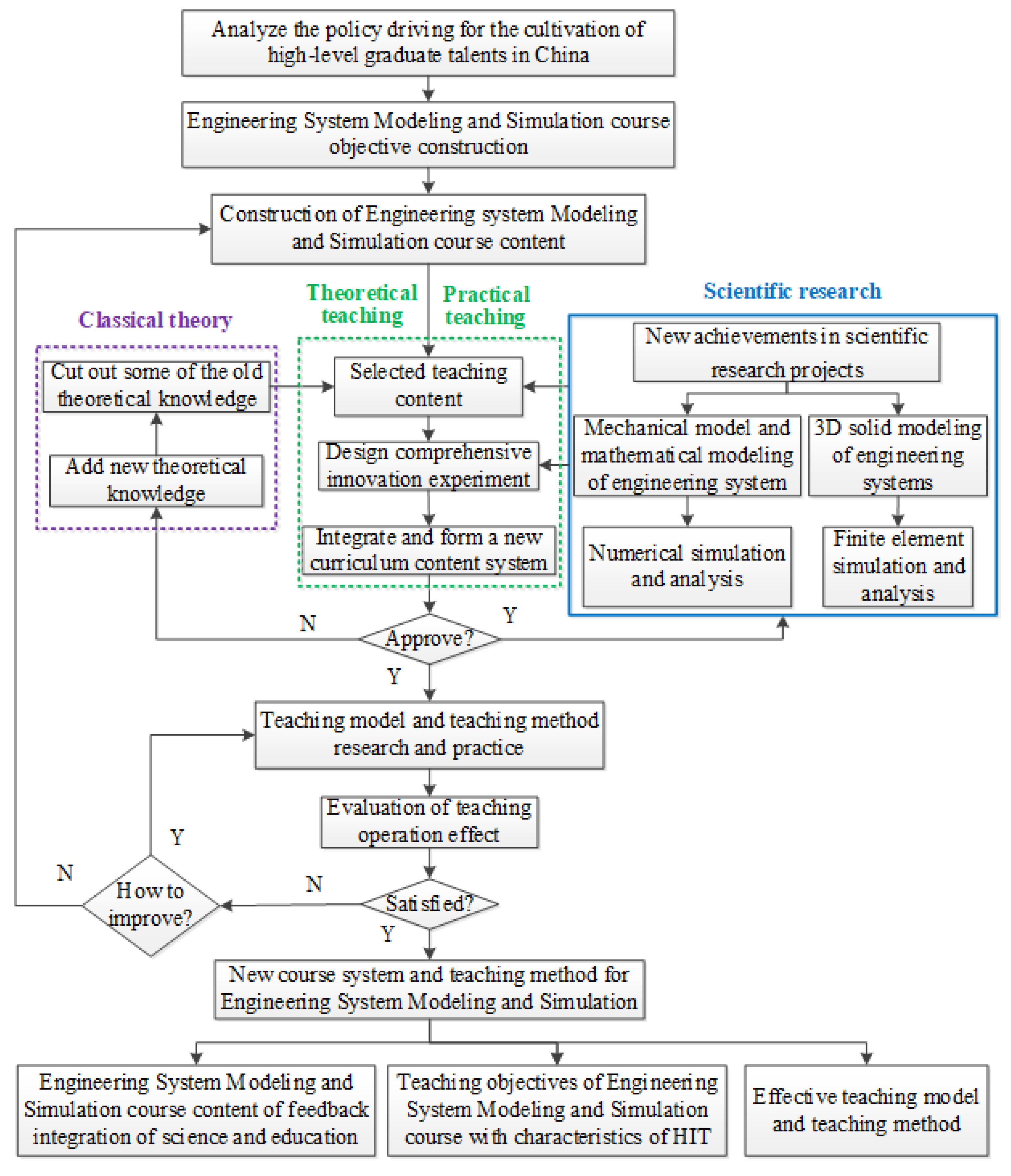
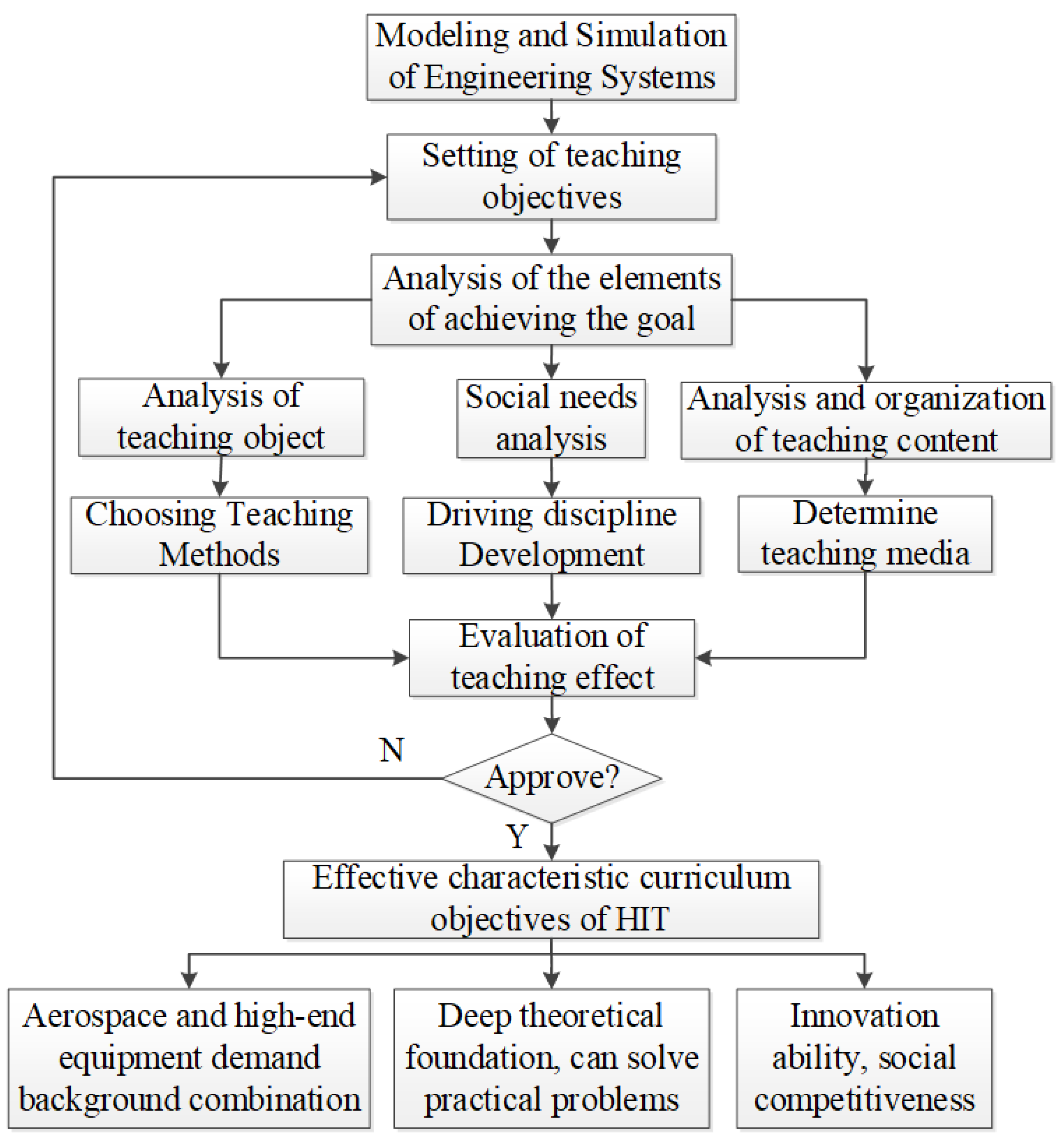
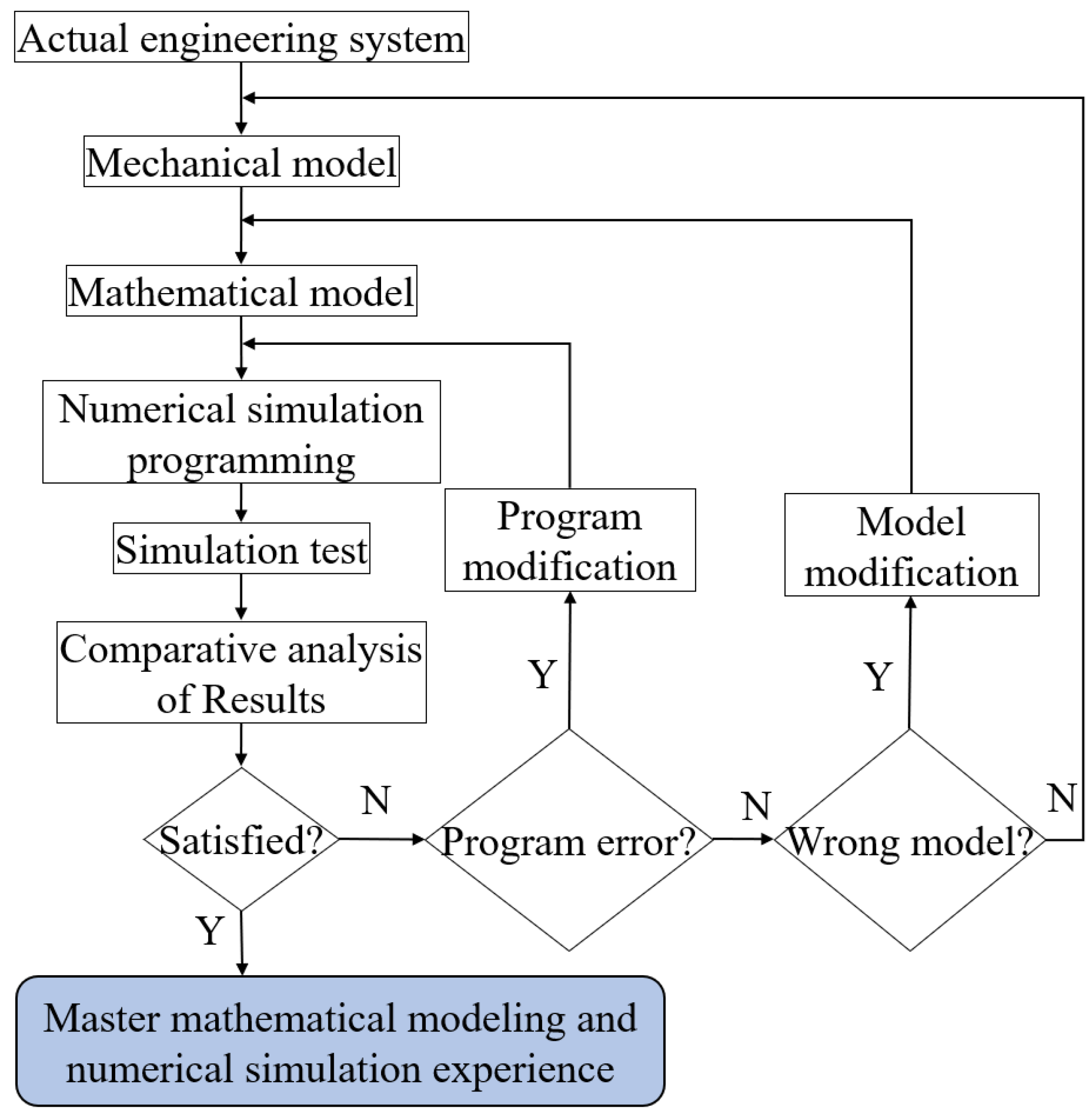
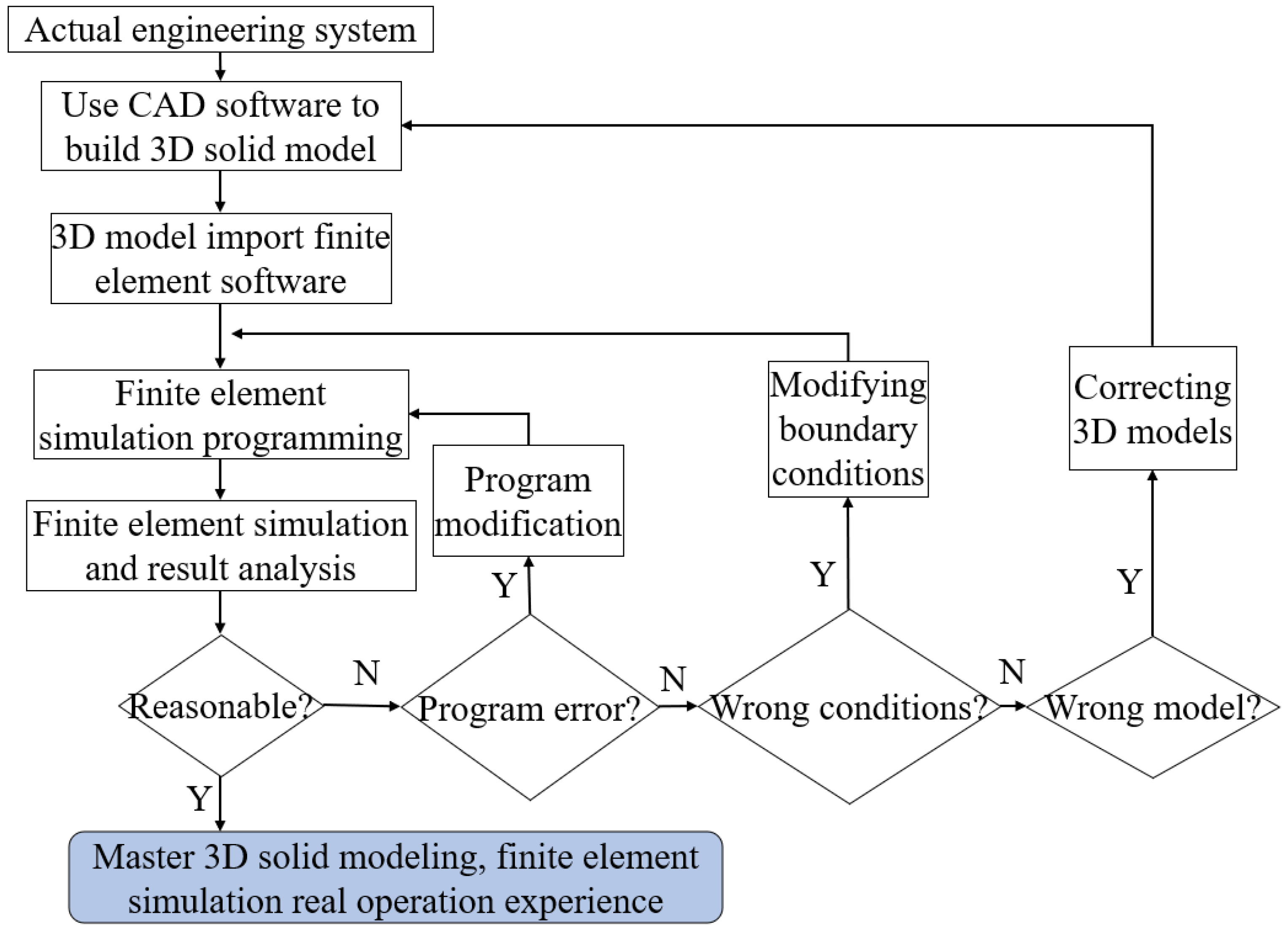
| No. | University in China | Assessment Results | Relevant Postgraduate Courses |
|---|---|---|---|
| 1 | Tsinghua University | A+ | Dynamic Testing and Analysis of Mechanical Systems; Vibration Theory |
| 2 | HIT | A+ | Engineering System Modeling and Simulation |
| 3 | Shanghai Jiao Tong University | A+ | System Modeling and Simulation |
| 4 | Huazhong University of Science and Technology | A+ | Dynamics Analysis and Control of Electromechanical Systems; Mechanical Vibrations |
| 5 | Beijing Institute of Technology | A | Analysis and Test of Dynamic Characteristics of Mechanical Systems |
| 6 | Tianjin University | A | Mechanical Dynamics |
| 7 | Dalian University of Technology | A | Mechanical Dynamics |
| 8 | Zhejiang University | A | Modern Testing Techniques |
| 9 | Xi ‘an Jiaotong University | A | Modern Testing Techniques; Analysis Theory and Control Technology of Mechanical Vibration Engineering |
| No. | University | Country | Relevant Postgraduate Courses |
|---|---|---|---|
| 1 | Massachusetts Institute of Technology | United States | Modeling and Simulation of Dynamic Systems |
| 2 | Stanford University | United States | Dynamic Systems, Vibrations and Control; Advanced Dynamics, Controls, and System Identification |
| 3 | University of Cambridge | United Kingdom | Mechanical Vibrations |
| 4 | Harvard University | United States | Mechanical Systems |
| 5 | Delft University of Technology | Netherlands | Dynamics of Structures; Dynamics and Introduction Continuum Mechanics |
| 6 | University of California, Berkeley | United States | Nonlinear Dynamics of Continuous Systems; Advanced Dynamics |
| 7 | Nanyang Technological University | Singapore | Systems Simulation and Modeling |
| 8 | Swiss Federal Institute of Technology Zurich | Switzerland | System Modeling; Multiscale Modeling; Multiphysics Modeling and Simulation |
| 9 | National University of Singapore | Singapore | Computation and Modeling; Advanced Computational Fluid Dynamics |
| 10 | Imperial College London | United Kingdom | Modeling and Control of Multi-body Mechanical Systems |
Disclaimer/Publisher’s Note: The statements, opinions and data contained in all publications are solely those of the individual author(s) and contributor(s) and not of MDPI and/or the editor(s). MDPI and/or the editor(s) disclaim responsibility for any injury to people or property resulting from any ideas, methods, instructions or products referred to in the content. |
© 2023 by the authors. Licensee MDPI, Basel, Switzerland. This article is an open access article distributed under the terms and conditions of the Creative Commons Attribution (CC BY) license (https://creativecommons.org/licenses/by/4.0/).
Share and Cite
Shan, X.; Cao, J.; Xie, T. The Development and Teaching of the Postgraduate Course “Engineering System Modeling and Simulation” in Combination with Essentials Taken from Research Projects. Systems 2023, 11, 225. https://doi.org/10.3390/systems11050225
Shan X, Cao J, Xie T. The Development and Teaching of the Postgraduate Course “Engineering System Modeling and Simulation” in Combination with Essentials Taken from Research Projects. Systems. 2023; 11(5):225. https://doi.org/10.3390/systems11050225
Chicago/Turabian StyleShan, Xiaobiao, Jian Cao, and Tao Xie. 2023. "The Development and Teaching of the Postgraduate Course “Engineering System Modeling and Simulation” in Combination with Essentials Taken from Research Projects" Systems 11, no. 5: 225. https://doi.org/10.3390/systems11050225





